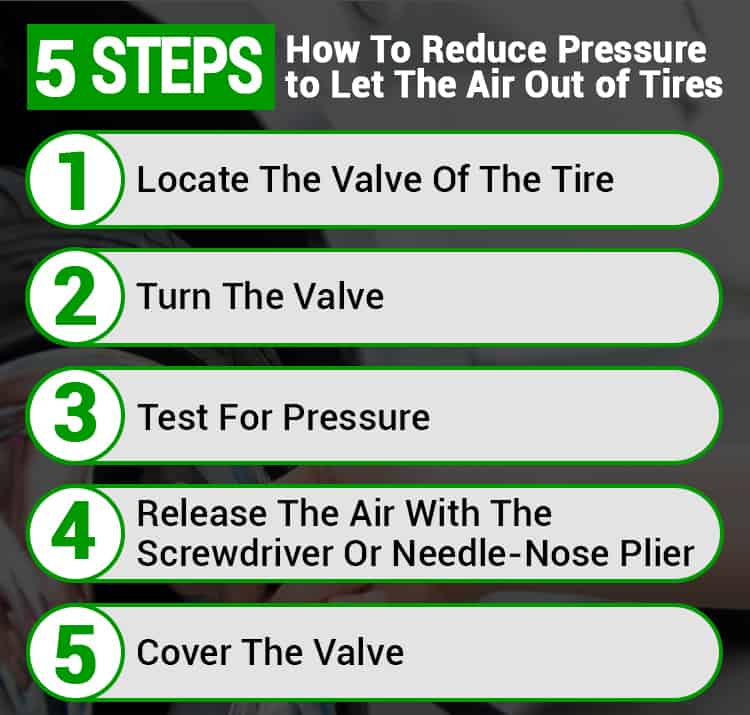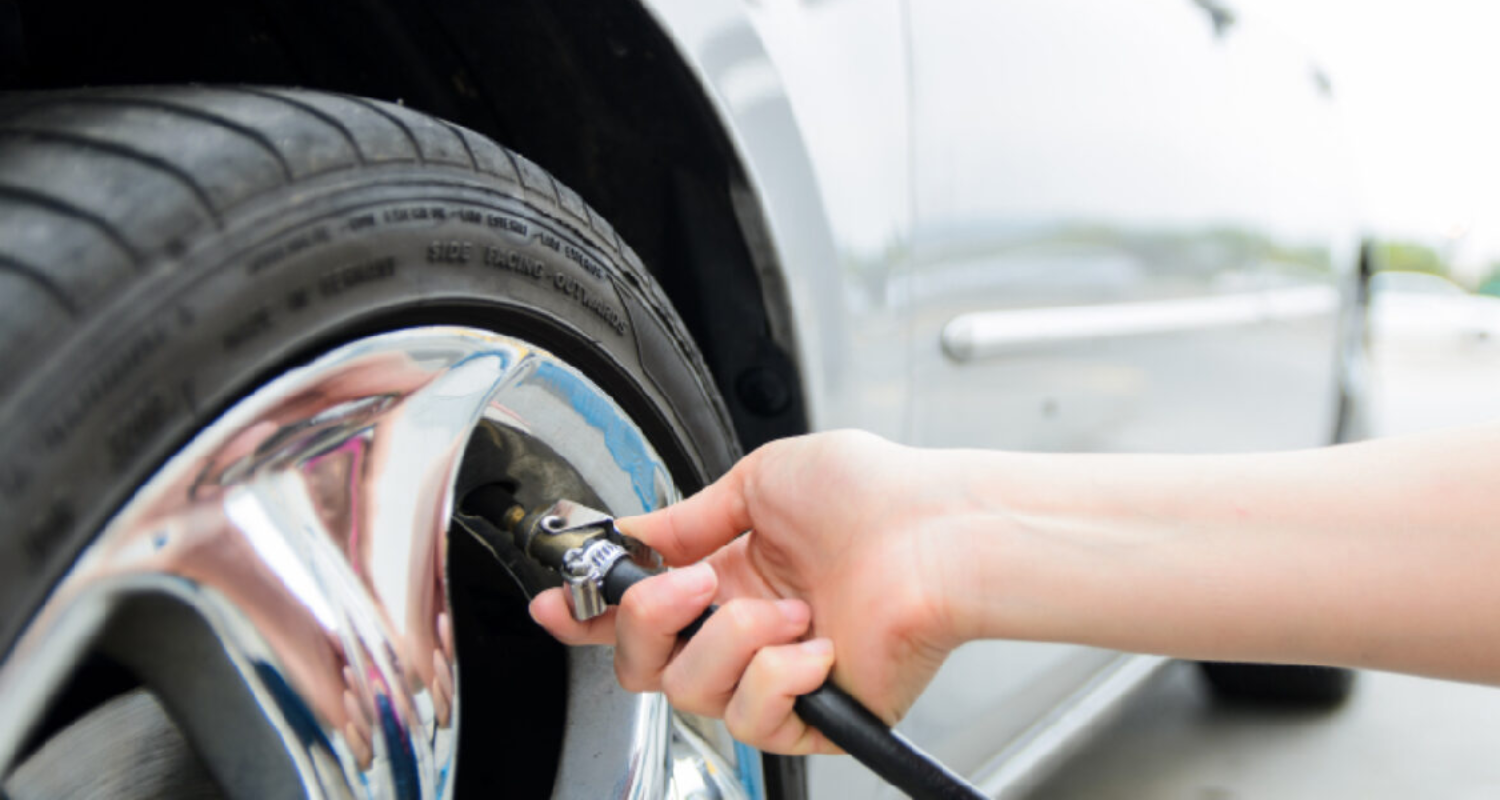Do you know that letting air out from your car tire can make your driving experience safer and more comfortable? Yes, it does. But do you need to know how to do it yourself?
This article will reveal the simplest methods used in deflating the air pressure in your car tire.
The steps for you to follow have been outlined below, but first, let's see why you need to let the air out from your tire.
Why Do You Need To Let The Air Out Of A Tire?
The major reason for letting air out of your tire is to reduce the air pressure caused by over-inflation. And, over inflation can occur when too much air pressure is pumped into the tire.
There is also a belief that rock-hard tires increase gas mileage, so some people require that their tires be deflated to reduce the pressure.
How To Let The Air Out Of A Tire
There are two methods of letting out air from your car tire. The first method involves using a screwdriver to reduce the pressure with the help of a pressure gauge. While the other method makes use of a digital tire pump to deflate air from the tire.
Method 1. Reduce The Pressure to Let The Air Out of Tires
This method is used to let out a fraction of the air pressure to satisfy the recommended level. The air flows through the tire valve and is measured by using the pressure gauge.
Tools You Need
- Pressure gauge
- Screwdriver or needle nose plier
- Plastic bags
Step-by-step Guide

Step 1: Locate the valve of the tire
The first requirement for this method is to search for the tire valve, which is usually located between the tire's spokes. The length of the valve is about 1 to 2 inches, and it looks like a tube. The valve has a cap that protects it from dirt.
Step 2: Turn the valve
After locating the valve, the next step is to remove it by turning it anticlockwise. And, when you have successfully removed the cap, you will observe that the valve has a raised metal part and a pin in the middle with a circular shape. Place the valve cover into the plastic bag for safekeeping.
Step 3: Test for pressure
To test the pressure in the tire, you will have to be very meticulous as high accuracy is required. Fix the pressure gauge to the tire valve, which will help you monitor the tire pressure and screw it to fit properly.
The pressure gauge is calibrated in pounds per square inch (PSI). Then, you can check the tire manufacturer's instructions for the leveling pressure to ensure you do not go below or stay above it.
Step 4: Release the air with the screwdriver or needle-nose plier
You can use the screwdriver or needle-nose plier to release the air by pressing it on the metal pin on the valve. As the air is being released, observe the pressure gauge. And, immediately it gets to the equilibrium pressure, you remove the screwdriver from the pin.
Step 5: Cover the valve
When you have achieved the recommended air pressure, you can go ahead and cover the valve. But this time, you will screw clockwise to seal it with the cap.
Method 2. Deflate The Tires to Let The Air Out of Tires
This method uses a tire pump to let out air from the tire. It is more straightforward when compared to method one, and it requires less equipment.
Tools You Need
- Tire Pump
- Screwdriver
Step-by-step Guide

Step 1: Loose the valve cap
Locate the valve and unscrew the valve cap in an anticlockwise direction, but do not remove it entirely; loosen it a little.
Step 2: Use the tire pump
Attach the tire pump to the valve and flip the lever on the instrument's back upward. The computer screen will display the current tire pressure in pounds per square inch (PSI). Continue the deflating process till you achieve the equilibrium or recommended air pressure.
Step 3: Remove the tire pump
After deflating the tire to the equilibrium pressure, you can now remove the tire pump from the valve. And, you can do this by flipping back the switch and unscrewing it from the valve.
Step 4: Tighten the valve cap
After you have removed the tire pump, tighten the valve cap.
Tips On How To Let The Air Out Of A Tire
Tip 1: Set the metal pin aside when extracting air
Adhering to this tip can save you from stress and time-wasting. If you fail to secure the metal pin while releasing the air from the tire, you will not be able to inflate your tire again. This means that you will have to buy a replacement, which is cheap but might take time to be delivered.
Also, the valve cap should be secured too, to avoid the same scenario. Though the loss of the valve cap might not lead to faster air loss, it increases the possibility of the tire valve being contaminated. And this might lead to leakage.
Tip 2: Allow the tire to cool before checking the tire pressure
Before checking your tire pressure by using a pressure gauge, ensure that the tire cools down first. The reason is that the tire expands due to the warm air particles inside it, which can lead to a false reading on the pressure gauge.
The generally accepted practice is to cool for about an hour if the temperature outside the tire is high.
Final Thoughts
When a car's tire pressure is balanced, it allows it to operate smoothly and consume less fuel. And, this article has made it easy for you to balance your car tire pressure by following two simple methods.
Since the performance of a vehicle depends on the tire's state, regular checks should be carried out. And, when the checks signify the need to let out air, you can use any method to deflate your tire. The method you will use should depend on the tools you have or can easily get.
